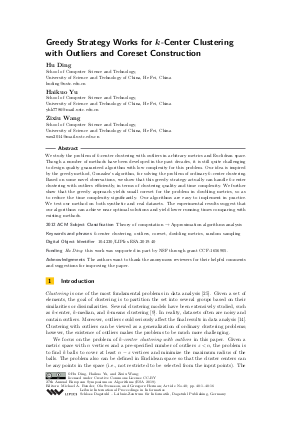LIPIcs.ESA.2019.40.pdf
- Filesize: 1.26 MB
- 16 pages

 Creative Commons Attribution 3.0 Unported license
Creative Commons Attribution 3.0 Unported license



































Feedback for Dagstuhl Publishing